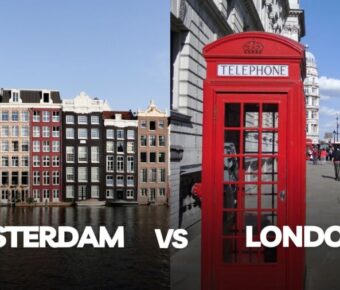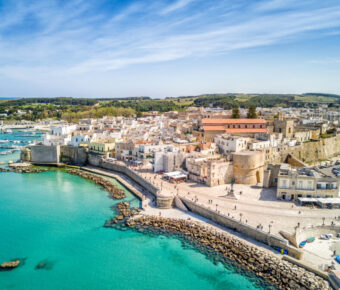
Spain Trip Cost: Affordable 7-Day Adventure Under $1000
Planning a trip to Spain? You’re in for a treat! This beautiful country offers stunning architecture, delicious cuisine, and rich culture. But before you pack your bags, let’s talk about the all-important question: how much will it cost? Two people can spend $2,000 to $4,000 on a one-week trip to Spain, depending on their travel style and choices.
Spain can fit many budgets, from budget-friendly hostels to luxury resorts. Your biggest expenses will be flights, accommodations, and food. But don’t worry – there are plenty of ways to save money without sacrificing fun. You can enjoy free walking tours, picnic in beautiful parks, and take advantage of menu del día lunch specials.
Ready to start planning your Spanish adventure? Let’s break down the costs and help you create a budget that works for you. With some smart planning, you can make your dream trip to Spain a reality without breaking the bank.
Contents
- Key Takeaways
- Understanding Spain Trip Costs
- Accommodation Options
- Dining and Food Budget
- Transportation Overview
- Entertainment and Sightseeing
- Accommodation Insights
- Hotels and Pricing
- Vacation Rentals and Airbnb
- Hostels for Budget Travelers
- Unique Accommodation Options
- Feasting on Spanish Cuisine
- Local Food Experiences
- Eating on a Budget
- Fine Dining in Spain
- Alcohol and Nightlife Costs
- Navigating Transportation
- Public Transport Systems
- Rental Cars and Independent Travel
- Intercity Travel Options
- Transport Tickets and Passes
- Activities and Attractions
- Popular Tourist Sites
- Hidden Gems of Spain
- Organized Tours vs Independent Exploration
- Cultural and Historic Highlights
- Planning and Budget Tips
- Cost-Saving Strategies
- Best Times to Travel
- Travel Insurance and Unexpected Expenses
- Managing Your Travel Budget
- Summary of Costs for Spain Travel
- More Travel Guides
Key Takeaways
- A week in Spain for two can cost between $2,000-$4,000
- Biggest expenses are flights, accommodations, and food
- Save money with free activities and local dining options
Understanding Spain Trip Costs
Planning a trip to Spain means figuring out how much money you’ll need. Costs can vary a lot depending on where you go and what you do. Let’s break down the main expenses you’ll face when visiting this beautiful country.
Accommodation Options
You’ve got lots of choices for places to stay in Spain. Hotels can cost anywhere from €50 to €200 or more per night. For budget travelers, hostels are a great option, with dorm beds starting around €15-30. If you want more space and a kitchen, look into apartment rentals. These can be a good deal, especially for longer stays or if you’re traveling with friends.
In big cities like Madrid or Barcelona, expect to pay more. Smaller towns and rural areas tend to be cheaper. Booking in advance usually gets you better rates. And don’t forget about off-season deals – you can save a lot by visiting in fall or spring instead of summer.
Dining and Food Budget
Spanish food is delicious, and you don’t have to spend a fortune to enjoy it. A typical breakfast at a cafe might cost €3-5. For lunch, look for “menu del dia” specials at restaurants. These often include multiple courses for €10-15.
Dinner can be pricier, but tapas bars are a fun and affordable option. You can sample lots of small dishes for €2-5 each. Grocery stores are great for picnic supplies or snacks. Budget about €30-40 per day for food if you mix eating out with some self-catering.
Don’t forget to try local specialties like paella or gazpacho. And wine is often cheaper than soft drinks!
Transportation Overview
Getting around Spain is pretty easy. For long distances, trains are comfortable and fast. A Madrid to Barcelona ticket might cost €50-100. Buses are slower but cheaper, often half the price of trains.
In cities, public transport is affordable. A single metro or bus ride is usually €1.50-2. Multi-day passes can save you money if you’ll be using public transport a lot.
Renting a car gives you freedom to explore, but watch out for parking fees in cities. Expect to pay €30-50 per day for a small car, plus gas.
Entertainment and Sightseeing
Spain has tons to see and do. Many museums have free hours or days – take advantage of these to save money. The Prado in Madrid, for example, is free for the last two hours of each day.
Tickets for popular attractions like the Sagrada Familia in Barcelona can cost €20-30. But there are lots of free sights too, like parks and historic neighborhoods.
Flamenco shows are a must-see. Prices range from €15 for a small bar performance to €50 or more for a big theater show.
Beach days are free, and hiking in Spain’s beautiful countryside costs nothing. Mix paid attractions with free activities to keep your budget in check.
Accommodation Insights
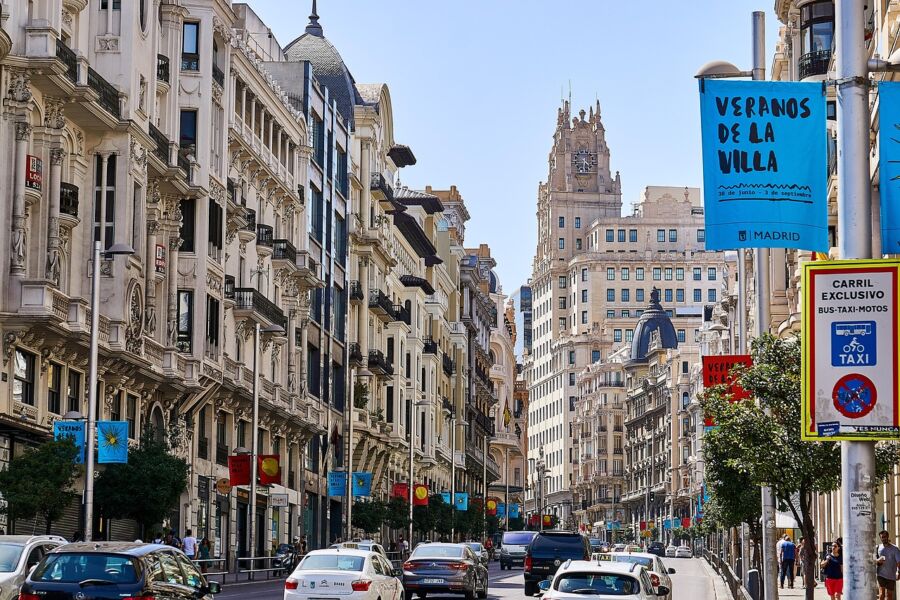
Spain offers a range of lodging options to fit different budgets and travel styles. From luxurious hotels to budget-friendly hostels, you’ll find something that suits your needs and wallet.
Hotels and Pricing
Hotels in Spain come in all shapes and sizes. In big cities like Madrid or Barcelona, you might pay €80-150 per night for a mid-range hotel. Luxury spots can cost €200 or more. Smaller towns often have cheaper rates, sometimes as low as €50-70 a night.
Keep an eye out for deals. Many hotels offer discounts if you book early or stay for longer. Breakfast is often included, which can save you some cash.
Don’t forget about seasonal changes. Prices can double during summer in popular beach towns. Winter is usually cheaper, except in ski resorts.
Vacation Rentals and Airbnb
Want more space or a home-like feel? Vacation rentals might be your best bet. You can find entire apartments in city centers for €60-120 per night. Rural houses or “casas rurales” are great for countryside stays, often costing €80-150 a night.
Airbnb is popular in Spain. Prices vary widely, but you can often find good deals. A private room might cost €30-50, while entire homes range from €50-200 depending on location and size.
These options are great for longer stays or if you’re traveling with a group. You’ll save money by cooking some meals at home.
Hostels for Budget Travelers
Backpackers and budget travelers, listen up! Hostels in Spain are cheap and fun. Dorm beds usually cost between €15-30 per night. Private rooms in hostels go for €40-70.
Most hostels offer free Wi-Fi and communal kitchens. Some even throw in free walking tours or pub crawls. It’s a great way to meet other travelers and save cash.
Quality can vary, so read reviews before booking. Look for hostels with lockers and 24-hour reception for added security.
Unique Accommodation Options
Want something different? Spain’s got you covered. You could stay in a parador – historic buildings turned into hotels. Prices start around €100 but can go much higher.
Glamping is getting popular. Sleep in a yurt or treehouse for €50-150 a night. For a real splurge, book a night in a castle. It’ll cost you €200 or more, but hey, how often do you get to be royalty?
Farm stays or “agroturismos” let you experience rural life. Prices vary but expect to pay €60-120 per night. You might even get to help with farm chores if you want!
Feasting on Spanish Cuisine

Spanish food is a highlight of any trip to Spain. You’ll find lots of tasty dishes at different price points to fit your budget. From cheap tapas to fancy restaurants, there’s something for everyone.
Local Food Experiences
You can’t visit Spain without trying tapas. These small plates are perfect for sampling local flavors. In some places, you’ll get free tapas with drinks. Prices vary, but expect to pay €2-5 per tapa.
Markets are great for cheap eats too. La Boqueria in Barcelona has fresh produce and ready-to-eat meals. Grab a fruit smoothie for €2 or a plate of paella for €10.
Don’t miss regional specialties. Try paella in Valencia, pintxos in San Sebastian, or gazpacho in Andalusia. These dishes usually cost €8-15 in local restaurants.
Street food is another budget-friendly option. Churros con chocolate make a tasty breakfast or snack for about €3.
Eating on a Budget
You don’t have to spend a lot to eat well in Spain. Look for “menu del dia” deals at lunchtime. These set menus include multiple courses and a drink for €10-15.
Supermarkets are your friend for cheap meals. Pick up bread, cheese, and ham for picnics. A basic picnic costs about €5-10 per person.
Avoid tourist traps near main attractions. Walk a few blocks away to find more authentic and affordable spots.
Fast food chains are cheap but not very Spanish. If you’re really pinching pennies, a McDonald’s meal costs about €7.
Fine Dining in Spain
For a special night out, Spain has plenty of high-end options. Michelin-starred restaurants offer tasting menus from €100-250 per person. Book well in advance for these spots.
Seafood restaurants can be pricey but worth it for fresh catch. Expect to pay €30-50 per person for a nice seafood dinner.
Traditional Spanish restaurants with white tablecloths fall in the middle range. A three-course meal with wine might cost €40-60 per person.
Remember to factor in the tip. It’s not required, but 5-10% is nice for good service.
Alcohol and Nightlife Costs
Drinks in Spain are pretty affordable. A glass of house wine or beer costs €2-4 in most bars. Cocktails are pricier at €7-12.
Happy hour deals can save you money. Look for “2 for 1” offers or discounted prices in the early evening.
Nightclub entry fees vary widely. Expect to pay €10-20 for popular clubs in big cities. Some include a free drink with entry.
To save money, try “botellón.” This is when young people drink in public spaces before going out. It’s not legal everywhere, so be careful.
Wine tours are a fun way to taste local drinks. Prices range from €30-100 depending on the length and what’s included.
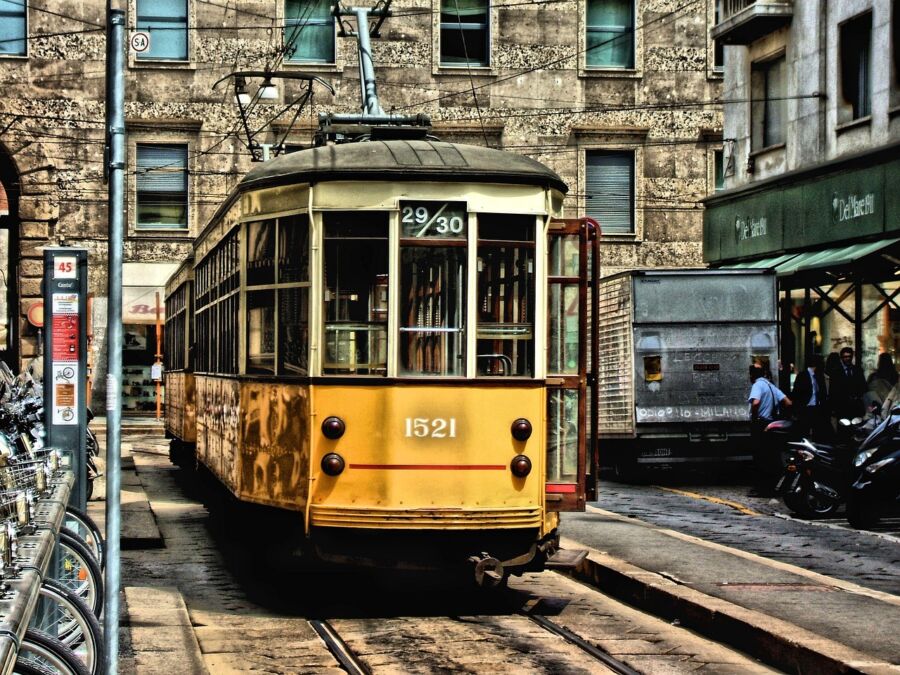
Getting around Spain is easy and affordable with various options to suit different needs and budgets. The country has a well-developed transport network that makes exploring cities and traveling between destinations a breeze.
Public Transport Systems
Spain’s cities have great public transport. Buses and metros run often and cover most areas. They’re cheap too. In Madrid and Barcelona, you can ride the metro all day for about €8. Buses cost around €1.50 per trip.
Many cities offer tourist passes for unlimited rides. These can save you money if you plan to use public transport a lot. You can buy tickets at stations or from machines on the street.
Remember to validate your ticket when you get on buses or enter metro stations. Fines for riding without a valid ticket can be steep.
Rental Cars and Independent Travel
Renting a car gives you freedom to explore at your own pace. It’s great for visiting small towns and rural areas. You can find cheap car rentals from big companies like Hertz or local firms.
Expect to pay about €30-50 per day for a small car. Gas is pricey in Spain, so factor that into your budget. Parking can be tricky in cities, but it’s usually free in smaller towns.
Make sure you’re comfy with manual transmission. Automatics are available but cost more. Always check the car for damage before you drive off.
Intercity Travel Options
For trips between cities, trains are often the best choice. Spain’s high-speed AVE trains can get you from Madrid to Barcelona in under 3 hours. They’re comfy but can be pricey, so book early for the best deals.
Buses are cheaper but slower. A Madrid to Barcelona bus trip takes about 8 hours and costs around €30. ALSA is the main long-distance bus company.
For longer trips, consider flying. Budget airlines like Ryanair and Vueling offer cheap flights between major cities. You can often search flights and hotels together to save more.
Transport Tickets and Passes
Many cities offer transport passes that cover all local buses and trains. In Madrid, a 7-day tourist pass costs about €35. It’s a good deal if you’ll use public transport a lot.
For intercity travel, look into rail passes. Renfe’s Spain Pass gives you 4 to 10 train rides within a month. Prices start at €170 for 4 rides in tourist class.
If you’re under 26 or over 60, ask about discounts. Many transport companies offer cheaper fares for these age groups.
Remember to keep your ticket handy. Inspectors check regularly, especially on trains.
Activities and Attractions
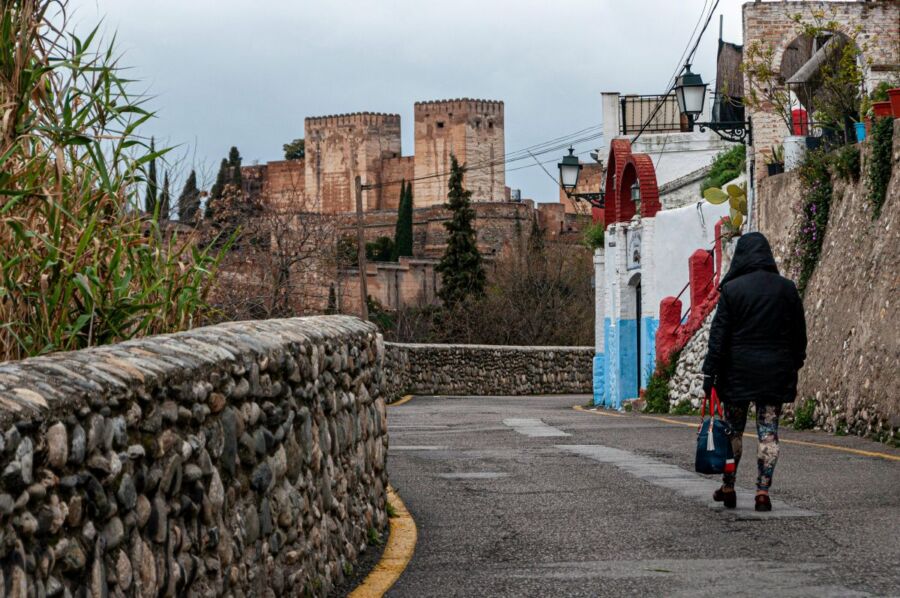
Spain offers a wealth of exciting things to do and see. From world-famous landmarks to hidden treasures, you’ll find plenty to fill your days. Let’s explore some top attractions, off-the-beaten-path gems, tour options, and cultural highlights.
Popular Tourist Sites
The Alhambra in Granada is a must-see. This stunning palace and fortress complex showcases intricate Islamic architecture. Make sure to book tickets in advance, as they often sell out. Expect to pay around €14 for a basic ticket.
Barcelona’s Sagrada Familia is another iconic spot. Gaudí’s unfinished masterpiece wows visitors with its unique design. Tickets start at €26 for adults.
In Madrid, don’t miss the Prado Museum. Home to works by Spanish masters like Velázquez and Goya, it’s a art lover’s dream. Entry costs €15.
The beaches of Costa del Sol attract sun-seekers year-round. Many are free to enjoy, though you might pay for loungers or umbrellas.
Hidden Gems of Spain
Escape the crowds in Cuenca, a small city known for its “hanging houses” perched on cliff edges. It’s a photographer’s paradise.
The Caminito del Rey in Málaga province offers thrills for adventure seekers. This walkway clings to steep canyon walls. Tickets cost about €10.
Explore the medieval town of Albarracín in Aragon. Its well-preserved architecture and city walls transport you back in time.
For a unique experience, visit the Setenil de las Bodegas in Andalusia. This town is built under overhanging rock formations.
Organized Tours vs Independent Exploration
Organized tours can save time and hassle. They often include transport and skip-the-line entry to popular sites. Prices vary widely based on duration and inclusions.
A day tour of Barcelona might cost €50-100 per person. Multi-day tours covering several cities can run €500-1000 or more.
Independent travel gives you more flexibility. You can save money by using public transport and booking attractions directly. But it requires more planning and can be more time-consuming.
Mix and match approaches. Book a few key tours and leave room for spontaneous exploration.
Cultural and Historic Highlights
Flamenco shows offer a taste of Spanish passion. In Seville, expect to pay €18-35 for a performance.
Soccer fans shouldn’t miss a chance to tour Camp Nou in Barcelona or Santiago Bernabéu in Madrid. Tickets run about €25-30.
Book a food tour to sample local delicacies. Learn about Spanish cuisine while tasting your way through a city. Prices start around €50-70 per person.
Don’t overlook Spain’s rich religious heritage. Many historic churches and cathedrals are free to enter or charge a small fee.
Planning and Budget Tips

Saving money on your Spanish adventure doesn’t mean skimping on experiences. With smart planning and insider know-how, you can stretch your euros further and make the most of your trip.
Cost-Saving Strategies
Book your flights and accommodations early to snag the best deals. Look for budget airlines like Ryanair or EasyJet for cheap flights within Europe. Stay in hostels or rent apartments through sites like Airbnb to cut costs. Many Spanish cities offer free walking tours – a great way to explore on a budget.
Eat like a local to save cash. Look for “menú del día” lunch specials at restaurants, which often include multiple courses for a fixed price. Shop at local markets and picnic in parks. Take advantage of free tapas in cities like Granada, where many bars serve complimentary snacks with drinks.
Use public transport to get around. Most Spanish cities have excellent metro and bus systems. For longer trips, consider budget-friendly options like BlaBlaCar or overnight trains to save on accommodation.
Best Times to Travel
Visit Spain in the shoulder seasons (April-May or September-October) for the best mix of good weather and lower prices. You’ll avoid the summer crowds and sky-high rates while still enjoying pleasant temperatures.
Winter can be a budget-friendly time to visit, especially for city breaks. Prices are lower, and you can find great deals on accommodations. Just pack some warm layers!
Avoid traveling during major festivals like Semana Santa (Holy Week) or the Running of the Bulls in Pamplona, when prices skyrocket and crowds are intense.
Travel Insurance and Unexpected Expenses
Don’t skimp on travel insurance – it’s a small price to pay for peace of mind. Look for policies that cover medical emergencies, trip cancellation, and lost luggage.
Set aside some extra cash for unexpected costs. You might want to splurge on a special meal or experience, or you could face surprise fees or transportation hiccups.
Keep some euros on hand for places that don’t accept cards, especially in smaller towns or rural areas. ATM fees can add up, so plan your withdrawals wisely.
Managing Your Travel Budget
Create a daily budget and track your spending. Apps like Trail Wallet or TravelSpend can help you stay on top of your expenses.
Mix up your activities to balance costs. Spend one day visiting free museums or beaches, then splurge on a guided tour or nice dinner the next.
Look for city tourist cards that offer free public transport and entry to multiple attractions. These can save you money if you plan to do lots of sightseeing.
Be flexible with your plans. If you find a great deal on accommodations in a different neighborhood or city, consider adjusting your itinerary. Sometimes the best travel experiences come from unexpected detours!
Summary of Costs for Spain Travel
Planning a trip to Spain? Let’s break down the costs so you can budget wisely. A week-long adventure for two typically runs around $4,000, but your mileage may vary.
Flights often make up the biggest expense. You can expect to pay about $700 per person for a round-trip ticket. But keep an eye out for deals – you might snag a bargain!
Once you’re there, accommodation is your next big ticket item. Budget around $100 per night for a decent hotel or Airbnb. If you’re pinching pennies, hostels can be much cheaper.
Food and drink in Spain can be surprisingly affordable. Set aside $30-50 per person daily for meals. Tapas bars are your friend – delicious and easy on the wallet.
Getting around is a breeze with Spain’s excellent public transport. A weekly transport pass in major cities costs about $30. Renting a car? That’ll set you back $40-60 per day.
Don’t forget to factor in attraction costs. Many museums have free days, but popular sites like the Sagrada Familia can cost up to $30 per person.

